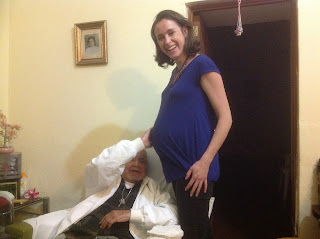We Are All One Family
It was one of those funky, loose,
freewheeling early afternoons in Mexico, in Tequila Town in 1990. The air was
dusty and hot inside my hungover remains, matching the weather of the day. We
were looking for something and it found us.
“What are you doing?” came across to me
from a Mexican in the street. I was wandering around and a poster in the back of a car had caught
my attention with the word, “Pacifico” on it.
I recoiled in my knee-jerk defense and
answered that I was doing nothing and I turned away in would-be self-
preservation. My assailant persevered and invited me to his discotheque close
by. The poster in the car was about his
disco. Hungover, annoyed and still suspicious I gave in as Phil Bayly – yeah,
that Phil Bayly – and two other friends and I went with our guide to see his
place, his discotheque.
It turned out to be a large space with a
dirt floor and a great deal of it was outside. I imagined that at night in the
dark, with lots to drink the place could transform into something more than
what I saw before me.
From there he invited us to his ‘local’ to
drink, hang out and socialize. We walked across those stone streets, under the
punishing sun to the cantina where he belonged. It was immediately clear that
he was a central figure, a chingón in
the bar. He belonged there. Many years later I learned that the trophies
decorating the place had been won by him.
 |
| Jose Luis, far right, at La Capilla Bar in 1990 |
What to drink in this cool place to escape
the haunting hangover from the prior night’s excesses of carelessly made
tequila? The drinks on offer were made with tequila and various soft drinks, refrescos. To stir the drinks the barman
used the same great butcher knife he used to cut his limes. I have since over
these years – returning to this refuge – seen, in the absence of a knife, a
common table fork used to stir the drinks.
To escape the effects of the heat and the
duress of the hangover we drank a lot. The day melted away until our new friend
announced he had a football match to play. We made it across the village to the
stadium, to the game. This was no ‘sand-lot’ pick-up game for casual fun. This
was a proper match with uniforms and referees.
I passed out on the bench of the stadium
and got lost and very frightened on my way back to the cantina, which – with the
help of providence – I found. I truly believe I have led a charmed life.
I don’t know who won the match but we
continued to drink, by now with abandon. How our guide and new friend ever
succeeded in playing in that match remains a mystery to me to this day, to this
moment. And at this moment I have lost seemingly forever the ability to ask him
how he did this accomplishment; how he stepped foot, uniformed onto the pitch
and played a full game having been under the influence of all the drinks we had
consumed at La Capilla Cantina.
 |
| From left to right, Phil Bayly with camera, Tomas Estes, Don Javier, owner of 'La Capilla', Jannet Arellano, Jose Luis' girlfriend, Jose Luis |
I have lost my ability to ask because I
have lost the reference. I have lost Jose Luis Partida, the man who introduced
us to the cantina which would eventually reach #16 in rankings of the 50 Best
Bars in the world. News of Jose Luis’
death reached me as an awakening I did not want, my form of denial.
He is one of those extraordinary, unsung
heroes that touch those around them profoundly simply by who they are, by the
way they live. He was irrepressible life itself. He said to me numerous times that we are all
one family. This I have parroted many times, taking refuge in its promise. When
he came to London Bar Show to represent La Capilla Bar – because Don Javier
could not make the trip – he told the crowded audience that they were all his
family.
Jose Luis my brother – all of our brother –
you have shown us by example the importance of believing that love is a better
choice than fear. You are proof incarnate to me of my charmed life for having
been blessed by knowing you.
Gracias
hermano para todo.


















































